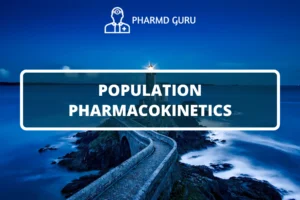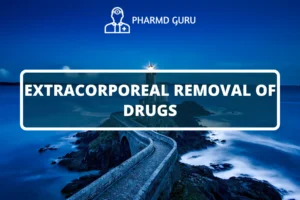TDM of drugs used in organ transplantations is a topic in Clinical Pharmacokinetics & Pharmacotherapeutic drug monitoring, which covers TDM of cyclosporine. It includes complete drug profile of cyclosporine.
SCROLL DOWN TO THE BOTTOM OF THE PAGE FOR ACTUAL NOTES.
Organ transplantation is a life-saving procedure for patients with end-stage organ failure. Following transplantation, recipients require lifelong immunosuppressive therapy to prevent organ rejection. Therapeutic Drug Monitoring (TDM) plays a critical role in optimizing the use of immunosuppressive drugs by monitoring drug concentrations in the blood. In this article, we will explore the importance of TDM in organ transplantation and its clinical implications.
TABLE OF CONTENTS:
- Introduction
- Immunosuppressive Drugs Used in Organ Transplantations
- The Significance of TDM for Organ Transplantation
- TDM Procedure for Transplantation Drugs
- Interpreting TDM Results
- Clinical Implications of TDM for Organ Transplantation
1. Introduction
Organ transplantation is a surgical procedure in which a healthy organ from a donor is transplanted into a recipient with organ failure. The success of organ transplantation relies on the use of immunosuppressive drugs to prevent the recipient’s immune system from attacking and rejecting the transplanted organ.
2. Immunosuppressive Drugs Used in Organ Transplantations
Several immunosuppressive drugs are commonly used in organ transplantation, including:
- Calcineurin inhibitors (e.g., cyclosporine, tacrolimus): These drugs inhibit the activity of calcineurin, a protein necessary for the activation of T-cells, thereby suppressing the immune response.
- Antiproliferative agents (e.g., azathioprine, mycophenolate mofetil): These drugs inhibit the proliferation of immune cells, particularly T-lymphocytes, which are involved in the rejection process.
- Corticosteroids (e.g., prednisone, methylprednisolone): These drugs have broad immunosuppressive effects and are often used in combination with other immunosuppressants.
3. The Significance of TDM for Organ Transplantation
TDM is crucial in organ transplantation for the following reasons:
- Individualized therapy: Organ transplant recipients vary in their drug metabolism and response. TDM helps healthcare providers tailor immunosuppressive therapy by monitoring drug concentrations and adjusting doses to achieve optimal therapeutic levels.
- Preventing rejection: Maintaining appropriate drug levels is essential for preventing organ rejection. TDM ensures that immunosuppressive drugs are within the therapeutic range, maximizing the chances of long-term graft survival.
- Minimizing toxicity: Immunomodulating drugs can have narrow therapeutic windows, and high drug concentrations may lead to toxic side effects. TDM helps detect elevated drug levels, allowing for dose adjustments to minimize toxicity.
- Detecting non-adherence: TDM can indirectly indicate medication non-adherence if drug levels are consistently below the therapeutic range. This information prompts healthcare providers to assess patient compliance and address any adherence issues.
4. TDM Procedure for Transplantation Drugs
The TDM procedure for immunosuppressive drugs in organ transplantation involves the following steps:
- Sample collection: Blood samples are collected from the patient to measure the concentration of the specific immunosuppressive drug.
- Laboratory analysis: The blood samples are sent to a specialized laboratory equipped with appropriate assays to quantify the drug levels accurately.
- Interpretation: The TDM results are interpreted based on the specific drug’s therapeutic range, timing of sample collection, and individual patient characteristics.
5. Interpreting TDM Results
Interpreting TDM results for immunosuppressive drugs requires consideration of several factors:
- Therapeutic range: Each drug has a target therapeutic range, which is typically defined as a range of concentrations associated with optimal efficacy and minimal toxicity.
- Timing of sample collection: TDM can involve measuring trough levels (prior to the next dose) or peak levels (usually a few hours after the dose).
- Clinical correlation: TDM results should always be interpreted in the context of the patient’s clinical status, including the occurrence of rejection episodes, drug interactions, and any signs of toxicity.
6. Clinical Implications of TDM for Organ Transplantation
TDM for immunosuppressive drugs in organ transplantation has several clinical implications:
- Individualized dosing: TDM enables personalized dosing based on the patient’s drug metabolism, renal function, concomitant medications, and clinical response.
- Maximizing graft survival: By maintaining immunosuppressive drug levels within the therapeutic range, TDM helps optimize graft survival and minimize the risk of rejection.
- Minimizing side effects: TDM allows for dose adjustments to minimize drug-related toxicity and adverse effects, enhancing patient safety and quality of life.
- Monitoring drug interactions: TDM can detect drug interactions that may affect immunosuppressive drug levels, guiding healthcare providers in managing concomitant medications.
ACTUAL NOTES:




